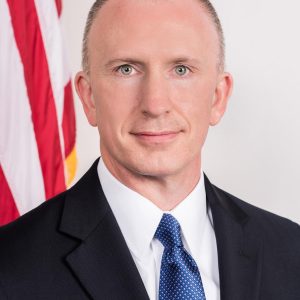
Pharmaceutical research and development (R&D) is unlikely to be significantly impacted by most favored nation (MFN) pricing, according to industry experts.
The US bears the highest drug costs globally, a dynamic that helps fund pharma R&D and benefits patients worldwide. As President Donald Trump pushes for US prices to align with international levels, some argue it is only fair that other countries contribute more to the cost of drug development.

Discover B2B Marketing That Performs
Combine business intelligence and editorial excellence to reach engaged professionals across 36 leading media platforms.
The first company to agree to MFN was Pfizer, which has agreed to provide all its medicines at MFN pricing in Medicaid and on TrumpRx. Trump suggested that the administration is in negotiations with other companies, specifically naming Eli Lilly.
MFN unlikely to have large impact on R&D
The aim of MFN is to reduce costs for Americans while ensuring other countries are paying more to help with the R&D of new drugs.
“The US is paying about 0.8% per capita GDP for R&D expenses and investments. The European countries pay less than half of that,” explains Ambassador Jeffrey Gerrish, deputy US Trade Representative for Asia, Europe, the Middle East, and Industrial Competitiveness from 2018 to 2020.
“If there are stronger actions taken by the administration to get other countries to pay their fair share of R&D, it’s going to spread out, potentially providing even more funding. I think it could turbocharge investments into R&D. That’s a benefit of working with other countries to get them to pay more and to really pay their fair share.”

US Tariffs are shifting - will you react or anticipate?
Don’t let policy changes catch you off guard. Stay proactive with real-time data and expert analysis.
By GlobalDataGerrish states that companies, including Eli Lilly, BMS and AbbVie, are already speaking with other nations, such as the UK, about matching their drug prices to the US list price, explaining the importance of this in funding R&D.
This will be no easy feat, with Gerrish noting that the US Government may need to negotiate with countries alongside pharma companies to ensure governments align on how they can balance the books. Gerrish suggests an agreement, similar to NATO, where each country could match the US on a per capita GDP basis to help support R&D efforts.

Pharma may also seek to recuperate R&D costs from alternative budgets, according to Steven Quay, founder and CEO of breast cancer biotech Atossa Therapeutics. While Quay doesn’t see MFN as having a large impact on the amount of capital pharma has in reserves for R&D, he does believe that one way pharma could redirect costs is from advertising costs, especially given current FDA investigations around drug advertising.
“If the HHS says we’re going to do away with advertising for whatever reason, that will open up a portion of their budgets that they’re not spending anymore. They could give it to shareholders, but they could also give it to R&D,” Quay explains.
Other changes in the drug development cycle could be adopted to reduce the cost of developing a drug, Quay adds.
“Big pharma spends $1bn to $2bn from a drug idea to getting it approved to give to patients. There are changes that could be made here, for example, in the preclinical area, in some cases now you can do organoids or AI instead of animals. In the clinic, we can do adaptive clinical trials in humans, where you can change protocols during the study. We really need to modernise drug development to reduce the costs and then maybe pricing can follow.”
The potential impact on biotech
While Trump has been hitting big pharma in his announcements, it raises the question as to how biotech will feel the impact. Given that companies will need to sell drugs at lower rates, Gerrish believes this could have a negative impact, adding that it could reduce drug development efforts and investments.
“A significant portion of new drugs originate from biotech startups and small companies so through MFN, this could impact their development of new medicines, and we could lose out on new, cutting-edge medicines that could be really critical to treating a number of diseases,” Gerrish says.

However, Quay believes it will be beneficial for biotech. “It will level the playing field a little bit for small biotechs versus the large companies,” he says.
In the later stages of drug development, when biotechs are seeking partnerships or M&A with big pharma, Quay and Gerrish hold conflicting views. Gerrish argues that with M&A potential, MFN clauses may increase the number of deals big pharma pursues. Quay points out that despite the growing number of biotech companies, M&A has not increased in recent years and he believes this trend is likely to continue.
Will patients feel the benefit?
Despite Pfizer announcing huge discounts, these will primarily be through the government direct to consumer (DTC) site, TrumpRx and pharma company ran DTC sites meaning the large discounts will be seen more by patients seeking therapies without insurance.
GlobalData analysts say that DTC programs may not help the average consumer achieve overall lower healthcare costs, as most order prescription drugs through insurance plans, which already provide discounts. Purchasing through a DTC website like TrumpRx may mean paying out of pocket (OOP) to gain the discounts, rather than through insurance, which may not be a significant improvement for consumers with insurance.
In 2023, about 91.7% of Americans had health insurance, with the number of uninsured individuals decreasing to approximately 26.5 million, meaning if the prices are not all amended on insurance policies, a very small percentage will see that impact.

One benefit of a visible list price through DTC sites is that it will help increase transparency in the US drug market and hopefully reduce the payments taken by third parties in the prescribing process, explains Chris O’Dell, Turquoise Health’s SVP of market solutions.
“Conceptually, this is good because there’s less room for people to take unnecessary cuts along the way,” says O’Dell. “By doing DTC, pharma is going back to what they could have done originally, which is saying, ‘we can sell this for cheaper, but this system prefers the higher priced product, so if we sell it direct to you, we can operate at a greatly reduced sticker price’. So, Trump RX and MFN aren’t creating anything novel; they’re just saying we can do this a different way, and it requires that the manufacturer sets a lower sticker price, and these middlemen lose as a result of that.”
O’Dell says that what patients are paying out of pocket for a drug will likely still be lower through their insurance provider than to buy direct. Despite this, he hopes that by having a public-facing reference price through Trump Rx and DTC sites, there will be more transparency in drug prices through insurance policies.
Despite all the changes to pricing, Gerrish believes the US will continue to be a favourable market to big pharma, especially given the investment that is being made for companies to onshore manufacturing. “Even with the reduction in these pricing levels, it’s still a very attractive market,” Gerrish concludes.





